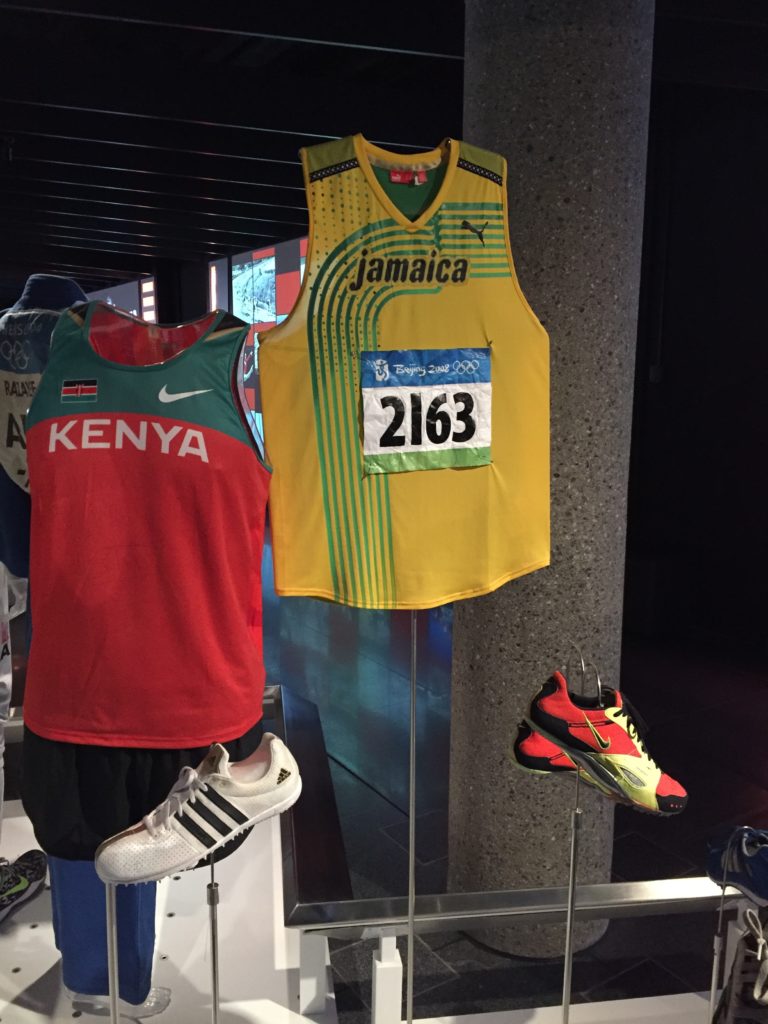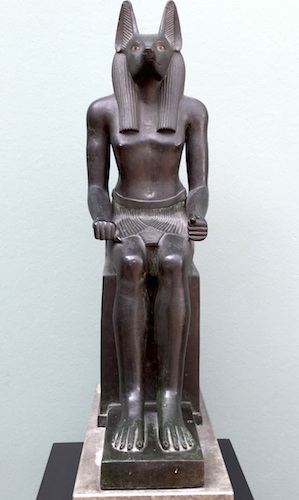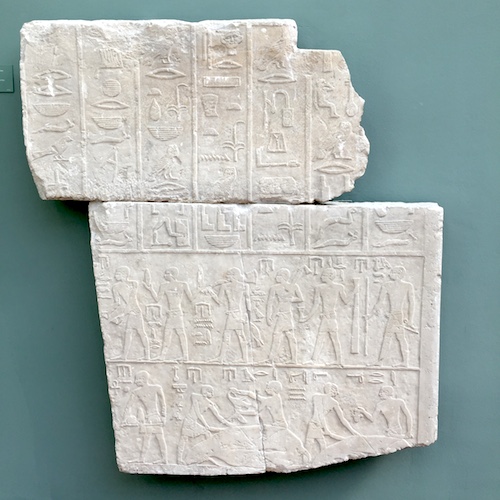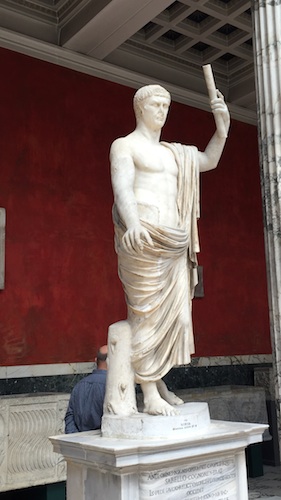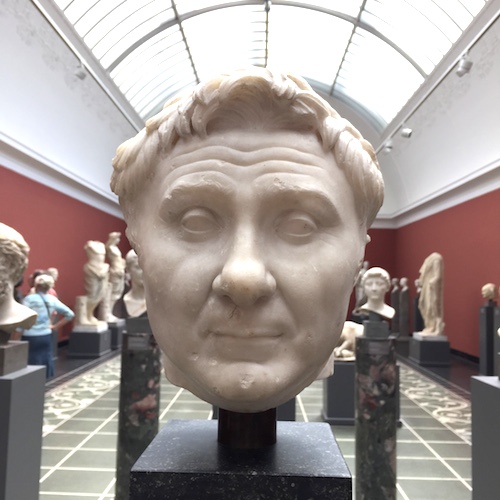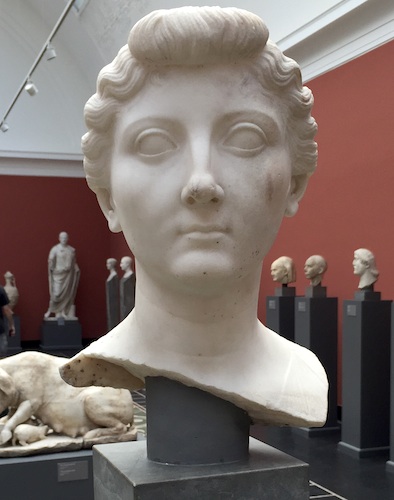The Musée du quai Branly is comprised of works of both historical and artistic importance from throughout the former French colonial empire.
To be completely upfront and explicit: there’s a lot about this museum that makes me uncomfortable. Were these objects taken from their cultures? Were they willingly given? Whose point of view is the museum from? That said, the objects were presented in a respectful way that told the stories of the cultures they were from, and the French government will repatriate objects if the government of the current country asks for them back. They also incorporated modern art made by people from these cultures, which I assume the museum acquired in the traditional way: by paying the artists who made the works.
All that said, I found this museum super-interesting for not-the-usual Paris museum reasons.

The museum’s plaques did directly address the controversy of showing some of the more culturally sensitive artifacts, like these decorated skulls. Unfortunately, my not-so-good French made them hard to understand.

Hair art was super common as part of decorative masks throughout many cultures. (There’s also a tradition of hair art in the West, especially as a part of Victorian mourning culture. The podcast Dressed covered it well last year.) The amount of hair and craft that it takes to make these are incredible.

This is one of the modern works created for the museum. It’s fish, but in a weird Escher-y way.

This is another of the modern works based on traditional arts.

There were a number of trunks and containers from Southeast Asia that are both super gorgeous and remind me of the same sized trunks and containers that you see from European cultures as well. Everyone likes pretty things to store and move their stuff . The patterns and textures of these were gorgeous.

After the arrival of the French and the native cultures’ conversion to Christianity, they would incorporate elements of Christianity into their already existing belief structures. This, for example, is Lucifer and one of his demons. But very much not the Lucifer you would see in any Western depiction. And I kind of love it.
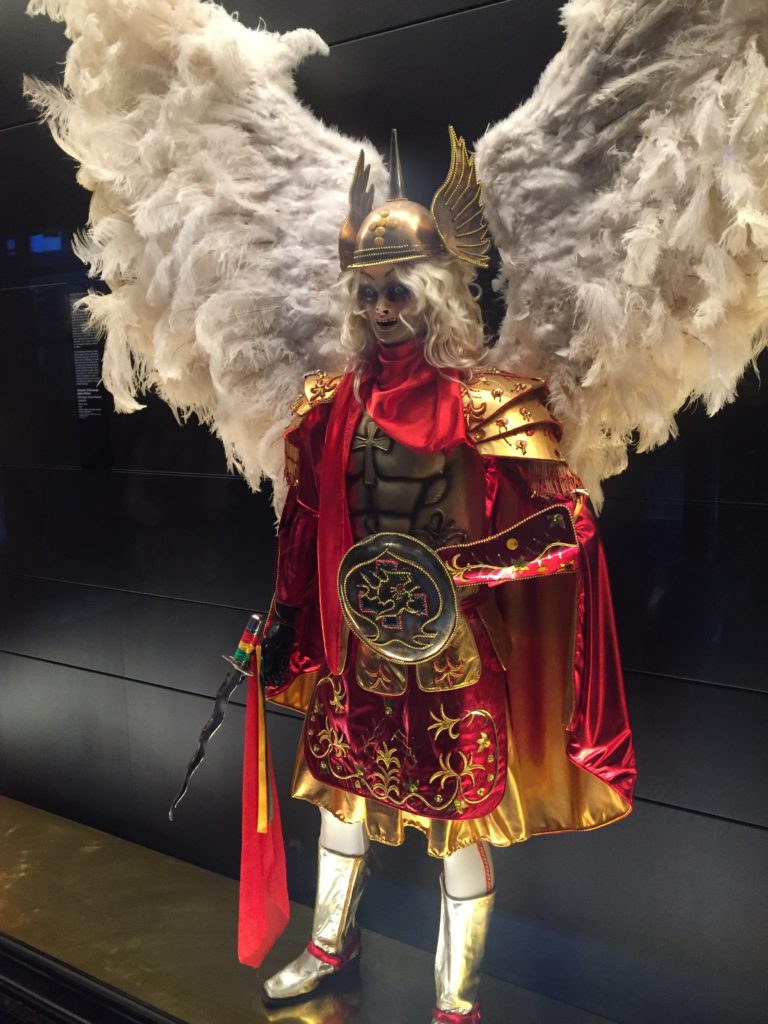
And this is St Michael, who will cast Lucifer out of heaven and into hell. Those wings are super-impressive.
In short, I think this museum is good because it makes me uncomfortable, and because it forces me, a white person, to reckon with colonialism and the not-so-beautiful side of the French culture I enjoy. But it also helps me understand other cultures around the world, too. Overall, it’s worth an afternoon.




